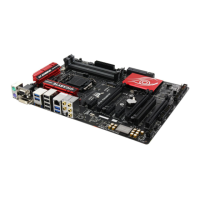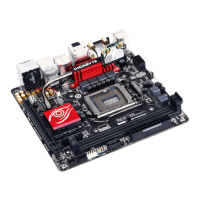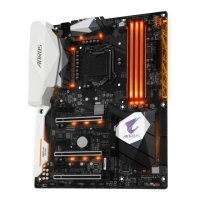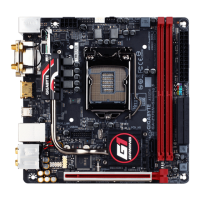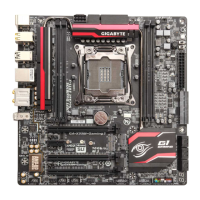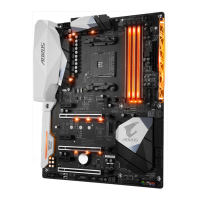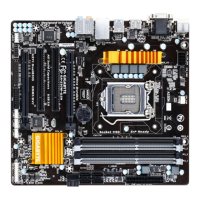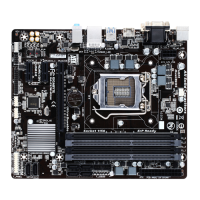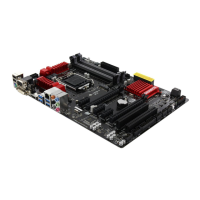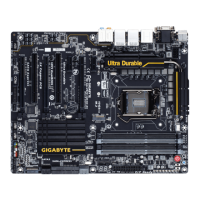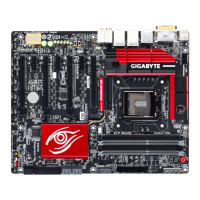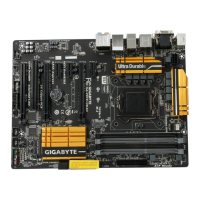
Do you have a question about the Gigabyte GA-Z97MX-Gaming 5 and is the answer not in the manual?
| Non-ECC | Yes |
|---|---|
| Memory channels | Dual-channel |
| Memory slots type | DIMM |
| Number of memory slots | 4 |
| Supported memory types | DDR3-SDRAM |
| Maximum internal memory | 32 GB |
| Supported memory clock speeds | 1333, 1600 MHz |
| Processor socket | LGA 1150 (Socket H3) |
| Processor manufacturer | Intel |
| Compatible processor series | Intel® Celeron® |
| USB 2.0 connectors | 2 |
| Number of SATA connectors | 7 |
| Number of Parallel ATA connectors | - |
| USB 3.2 Gen 1 (3.1 Gen 1) connectors | 1 |
| RAID levels | 0, 1, 5, 10 |
| Supported storage drive interfaces | SATA |
| HDMI version | 1.4a |
| Headphone outputs | 5 |
| USB 2.0 ports quantity | USB 2.0 ports have a data transmission speed of 480 Mbps, and are backwards compatible with USB 1.1 ports. You can connect all kinds of peripheral devices to them. |
| Bluetooth | No |
| LAN controller | Atheros Killer E2201 |
| Audio chip | Realtek ALC1150 |
| Component for | PC |
| Power source type | ATX |
| Motherboard chipset | Intel® Z97 |
| Audio output channels | 7.1 channels |
| Motherboard form factor | micro ATX |
| Maximum resolution | 4096 x 2160 pixels |
| Maximum graphics card memory | 1000 MB |
| Number of displays supported | 3 |
| Parallel processing technology support | 2-Way CrossFireX, 2-Way SLI |
| BIOS type | UEFI AMI |
| ACPI version | 5.0 |
| BIOS memory size | 64 Mbit |
| Bundled software | Norton Internet Security (OEM version)\\r Intel Rapid Start Technology\\r Intel Smart Connect Technology\\r Intel Smart Response Technology |
| Width | 244 mm |
|---|
Essential safety and handling guidelines before installing hardware components.
Detailed list of hardware specifications for the motherboard, including CPU, memory, and slots.
Step-by-step guide for correctly installing the CPU and its cooler onto the motherboard.
Instructions for installing RAM modules and configuring dual channel memory.
Procedure for installing expansion cards like graphics or network cards into PCI Express slots.
Guide to configuring multiple graphics cards for enhanced performance.
Explanation of all ports and connectors located on the motherboard's rear panel.
Identification and function of internal headers and connectors on the motherboard.
Overview of the initial logo screen and function keys available during system boot.
Introduction to the BIOS interface, including Startup Guide and ST Mode.
Configuration options for CPU, memory, and advanced frequency settings for performance tuning.
Displays motherboard and BIOS version, and allows system language and time configuration.
Settings for boot options, security, fast boot, USB support, and system startup behavior.
Configuration for onboard devices like graphics, audio, LAN, SATA, and USB controllers.
Settings for system power states, wake-up events, and power saving features.
Options for saving BIOS settings, loading defaults, and exiting the setup utility.
Steps to install SATA drives, configure controller mode (IDE, AHCI, RAID).
Guide to installing OS and necessary RAID/AHCI drivers for storage configuration.
Instructions for installing essential chipset drivers using the GIGABYTE driver disk.
Guide to installing GIGABYTE-developed and free software applications.
Details about drivers on the disk and GIGABYTE contact information.
Information on DualBIOS, Q-Flash, and @BIOS for updating the motherboard BIOS.
Introduction to the GIGABYTE App Center for managing utilities, drivers, and BIOS updates.
Guide to using EasyTune for system tuning, overclocking, and fan speed adjustments.
Tool for monitoring system hardware, fan speeds, temperatures, and voltages.
Simplified configuration utilities including Disk Mode, Smart Response, Rapid Start, Smart Connect, XHD.
Utility to enable or change Fast Boot and AC Power Loss settings within the OS.
Feature for managing computer or internet usage time with custom rules.
Utility for backing up partitions as image files and restoring the system.
Tool to block specific USB device types on the PC for enhanced security.
Customizes the Windows desktop environment and application access.
Software for defining hotkeys and adjusting mouse sensitivity for gaming.
Utility for managing network connection status, bandwidth, and settings.
Guide to setting up speaker configurations, sound effects, and microphone recording.
Common troubleshooting steps, FAQs, and a system startup diagnostic procedure.
List of POST codes displayed on debug LEDs for system status and error diagnosis.
